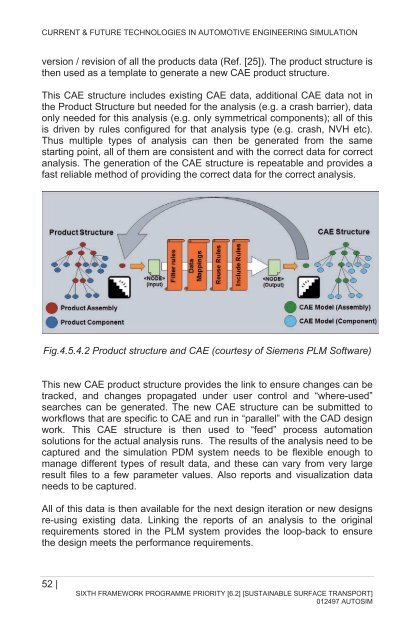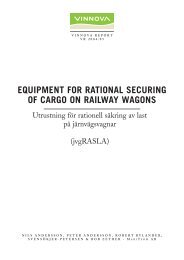Download - Autosim Autosim
Download - Autosim Autosim
Download - Autosim Autosim
You also want an ePaper? Increase the reach of your titles
YUMPU automatically turns print PDFs into web optimized ePapers that Google loves.
CURRENT & FUTURE TECHNOLOGIES IN AUTOMOTIVE ENGINEERING SIMULATION<br />
version / revision of all the products data (Ref. [25]). The product structure is<br />
then used as a template to generate a new CAE product structure.<br />
This CAE structure includes existing CAE data, additional CAE data not in<br />
the Product Structure but needed for the analysis (e.g. a crash barrier), data<br />
only needed for this analysis (e.g. only symmetrical components); all of this<br />
is driven by rules configured for that analysis type (e.g. crash, NVH etc).<br />
Thus multiple types of analysis can then be generated from the same<br />
starting point, all of them are consistent and with the correct data for correct<br />
analysis. The generation of the CAE structure is repeatable and provides a<br />
fast reliable method of providing the correct data for the correct analysis.<br />
Fig.4.5.4.2 Product structure and CAE (courtesy of Siemens PLM Software)<br />
This new CAE product structure provides the link to ensure changes can be<br />
tracked, and changes propagated under user control and “where-used”<br />
searches can be generated. The new CAE structure can be submitted to<br />
workflows that are specific to CAE and run in “parallel” with the CAD design<br />
work. This CAE structure is then used to “feed” process automation<br />
solutions for the actual analysis runs. The results of the analysis need to be<br />
captured and the simulation PDM system needs to be flexible enough to<br />
manage different types of result data, and these can vary from very large<br />
result files to a few parameter values. Also reports and visualization data<br />
needs to be captured.<br />
All of this data is then available for the next design iteration or new designs<br />
re-using existing data. Linking the reports of an analysis to the original<br />
requirements stored in the PLM system provides the loop-back to ensure<br />
the design meets the performance requirements.<br />
52 |<br />
SIXTH FRAMEWORK PROGRAMME PRIORITY [6.2] [SUSTAINABLE SURFACE TRANSPORT]<br />
012497 AUTOSIM
















